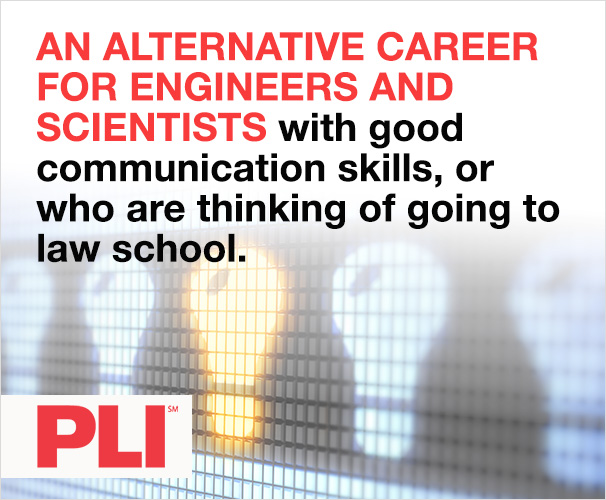Spotlight for Career Services Professionals
The career and professional development team at Texas A&M University - Central Texas (TAMU-CT) has experienced challenges with their virtual career fairs and are developing alternative methods to increase engagement between employers and students.
“We've hosted three virtual fairs [in our CMS] and we've received mixed reviews from students and employers,” explains Jessica Doner, coordinator for career and professional development at TAMU-CT.
“The integrated tools have been great for employers that are connected with our university to register and students are already engaged with [the CMS], so it felt organic. During the first fair last fall, we had some issues, but everybody was still open to it. We also had great engagement for both employers and students last spring, but again, we had some issues, particularly with technology.”
Students were able to schedule themselves to meet with employers, something the team and students found helpful, but employers were not as happy with the process, which left gaps in their schedules. At an in-person fair, such gaps could be filled by walk-ups, but that is not the case with the virtual fair. Doner said her team also received some feedback concerning the limitations of having virtual interactions and the sporadic unreliability of technology.
“Making sure everybody was refreshing their schedules, making sure anybody who was having technology issues was able to get a new session scheduled, these are not things we need to worry about during an in-person fair,” she notes.
“If a student wants to speak to an employer at a traditional career fair and that employer is busy, the student can meet with other employers and stop back later when that first employer is available. Face-to-face fairs are easier to navigate for students and employers, especially since they are able to watch for visual cues and non-verbal communication.”
While Doner said participants were more accustomed to the nuances of virtual processes and interactions during the fair held last spring, along with platforms offering new tools that were more intuitive, she felt there was still “something missing” without the face-to-face interactions and flexibility that in-person career fairs offer.
However, traditional in-person career fairs do not provide all of the answers for TAMU-CT’s student body, which includes a sizable population of adult learners.
“We are an upper-division university, so we offer bachelor’s and master’s degrees,” Doner explains.
“All of our students are transfer students with an average age of about 32 years old. We have three unique sets of students who all meet at intersections.”
These sets include:
- Early-college high school students—Students who graduate high school with an associate degree;
- Traditional-age students—Students who have consortium agreements with local community colleges so they are working toward associate and bachelor’s degrees at the same time on both campuses; and
- Adult learners—Professionals who might have full-time jobs and families, but are gaining education for career advancement.
“We have a lot of military-affiliated students due to our proximity to Fort Hood and we have a lot of retired military,” Doner adds.
“We also have what I call ‘bucket-listers,’ who are adult students who have always wanted to earn a degree, but focused on family or career and have come back to school to finish.”
Because of TAMU-CT’s unique student population, Doner says that neither virtual nor in-person career fairs meet the groups where they are.
“As we reflected on our fall 2021 fair, and we got the same kinds of mixed feedback, we agreed that it was time to start rethinking career fairs, primarily because we don’t have a traditional college experience here,” she says.
“We asked ourselves: How can we continue to nurture our relationships with employers when we can’t go to them and they can’t come to us? How are they interacting with students? We are hoping to be a little less virtual, but, in light of the pandemic, to also be safe.”
Doner says the first step was for career center staff to understand how TAMU-CT students’ experience with the university—and their work lives—have changed since they have been remote for so long.
Staff found out that because of this sizable shift, they cannot apply past knowledge and assumptions about the student population to the current groups. Instead, they needed to redefine who their students are now and identify their needs in the current environment.
Based on this knowledge, TAMU-CT career and professional development staff are building employer engagement opportunities with targeted student groups in partnership with faculty. The career center brings employers to campus—virtually for distance learners and face-to-face for learners on campus—to interact with smaller groups of students.
“Our Employer Spotlights started at the height of the pandemic, when we all went home and realized we were not coming back in a week or two,” Doner explains.
“One of the very first challenges we were up against was continuing to build connections on campus between employers and students. We decided to host as many employers as we could to do virtual sessions and share information about their organization and its open opportunities.”
TAMU-CT Career and Professional Development hosted employers almost weekly. These representatives would talk about the employer’s open opportunities, organization, and culture, and they would interact with students.
“The Employer Spotlights gained a lot of traction,” Doner notes, adding that the career center posts recordings of these events on its YouTube page for students, alumni, and others to view anytime.
“Employers were eager to participate and students liked the content and being able to interact with employers. In fall 2020, we brought more structure to Employer Spotlights by making them biweekly. Every Wednesday afternoon, we’re either hosting a spotlight or holding a career readiness workshop, which may focus on resume writing, networking, or another aspect of the job search.”
Doner says the reception among students and employers has been very positive. Employers report having more meaningful connections with TAMU-CT students. On the other side, students like being able to ask questions if they join live and, if they cannot attend live, having the flexibility to watch the recorded sessions when their schedule permits or when, for example, technology that may be shared with other family members is available.
“No two spotlights are the same,” Doner explains.
“Employers do demonstrations, panel discussions, and presentations. Others have brought interns and new employees to talk about the employer’s culture or their onboarding experience. We have had great interactions between employers and our students. I think having the real-time questions from students helps employers share information that they might not have thought to share beforehand and gives the students a unique opportunity to build a connection with an employer that may set themselves apart.”
TAMU-CT Career and Professional Development will continue to hold Employer Spotlights as it continues to build new ways of engaging employers on campus through partnerships with faculty. Faculty are valuable partners for planning, marketing, and holding effective employer sessions.
“Right now, especially, faculty have a captive audience with our students,” Doner points out.
“They interact with students more than anyone else on campus. Beyond that, our faculty are industry experts. They help us identify employers and can invite them into their classrooms; let their students know about our events and resources; and tell us about industry trends, what their students are learning, and the skills employers expect the students they recruit to have.”
TAMU-CT Career and Professional Development will still hold about two to three career fairs per semester, but they will likely be smaller college-specific fairs.
“We are working with the colleges to determine if they will be in-person or a hybrid approach,” Doner says.
“We are planning a spring semester that offers new programming to continue providing resources that add value to our unique student population.”
Doner suggests that career centers carve new paths as the way students are learning and connecting have changed immensely throughout the COVID pandemic.
“Think about who and where your students are right now,” Doner suggests.
“We can’t apply the same best practices to our work that we did in 2019 because our student cohorts, the ways they learn and work, and their lives are different. Have meaningful conversations with the students who come to you for help. Listen to their needs and adapt to them, whether that’s developing new programming or new ways for them to connect with us and with employers.
“The innovation that resulted from the pandemic won’t go away and best practices for this new environment are not fully defined yet. We may need to rethink our mission statements and our goals so we can meet our students’ needs.”



